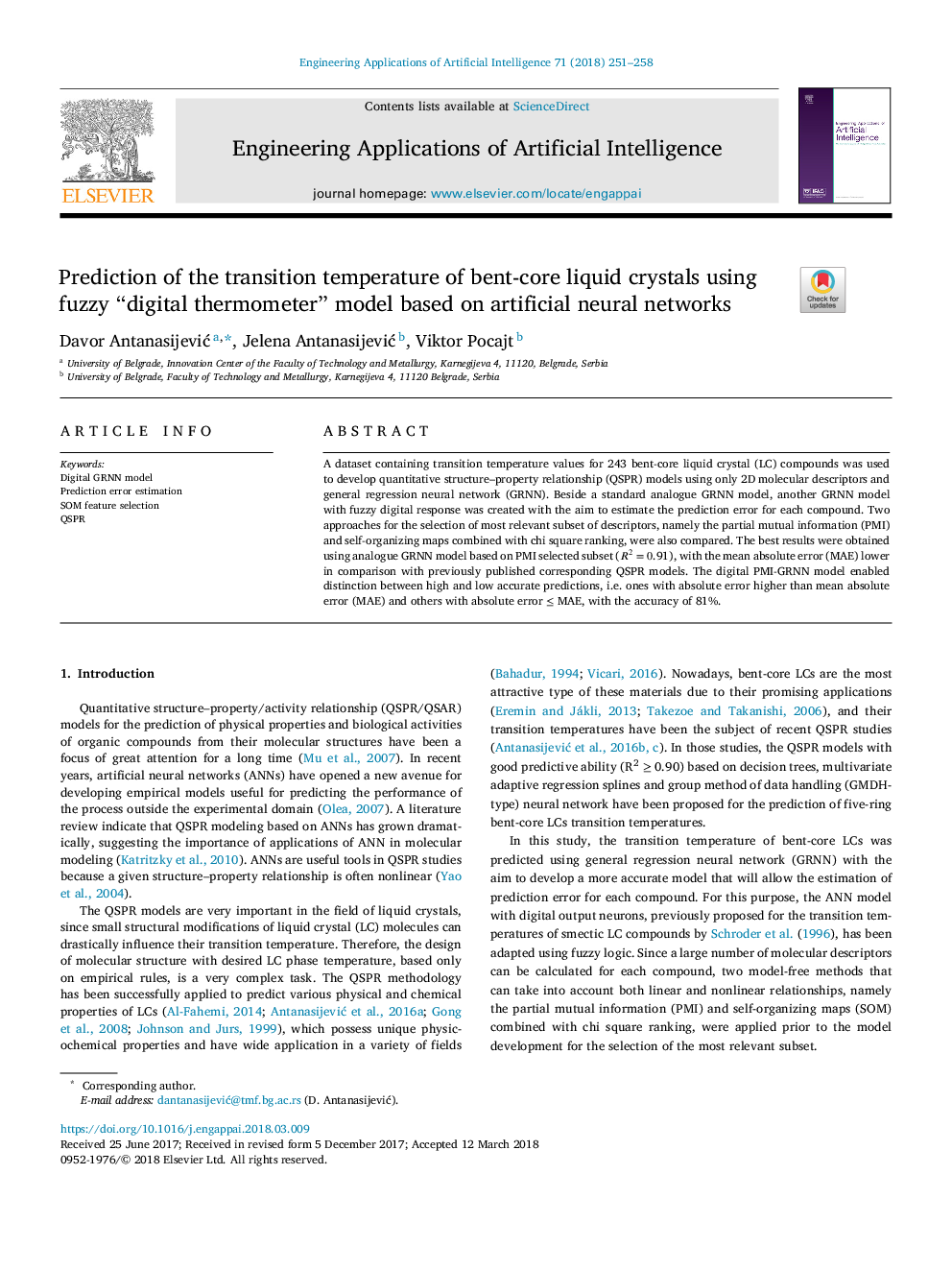| Article ID | Journal | Published Year | Pages | File Type |
|---|---|---|---|---|
| 6854204 | Engineering Applications of Artificial Intelligence | 2018 | 8 Pages |
Abstract
A dataset containing transition temperature values for 243 bent-core liquid crystal (LC) compounds was used to develop quantitative structure-property relationship (QSPR) models using only 2D molecular descriptors and general regression neural network (GRNN). Beside a standard analogue GRNN model, another GRNN model with fuzzy digital response was created with the aim to estimate the prediction error for each compound. Two approaches for the selection of most relevant subset of descriptors, namely the partial mutual information (PMI) and self-organizing maps combined with chi square ranking, were also compared. The best results were obtained using analogue GRNN model based on PMI selected subset (R2=0.91), with the mean absolute error (MAE) lower in comparison with previously published corresponding QSPR models. The digital PMI-GRNN model enabled distinction between high and low accurate predictions, i.e. ones with absolute error higher than mean absolute error (MAE) and others with absolute error ⤠MAE, with the accuracy of 81%.
Keywords
Related Topics
Physical Sciences and Engineering
Computer Science
Artificial Intelligence
Authors
Davor AntanasijeviÄ, Jelena AntanasijeviÄ, Viktor Pocajt,
